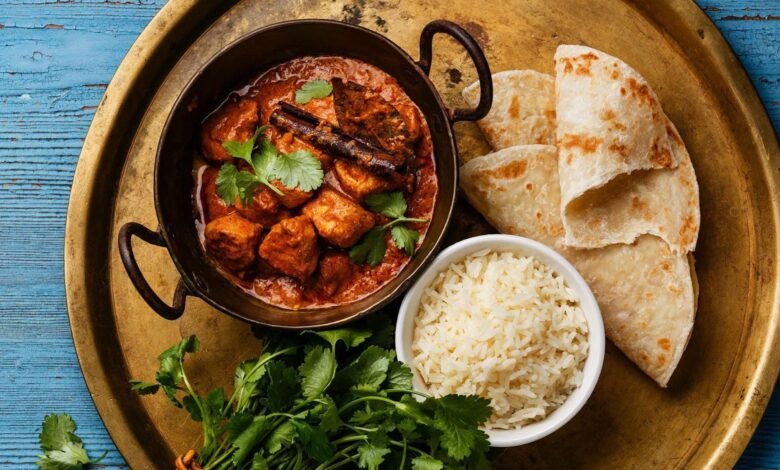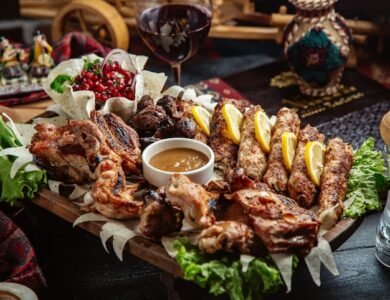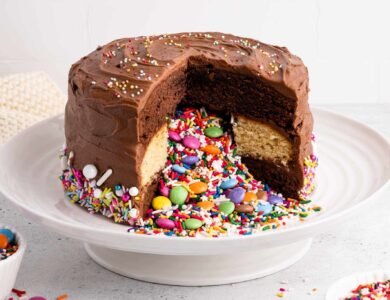Everything You Need to Know About Indian Food Preparation

Indian food history traces back to the ancient Indus civilization, around 5,000 years ago, when staples like wheat, rice, millet, chickpeas, and lentils formed the basis of the diet. Spices like cinnamon were used early on, evolving into the aromatic blends we know today, including black cardamom, cumin, and star anise. Dairy products and flatbreads also became integral parts of Indian food over time. Contrary to popular belief, India has a long history of consuming meats, including cattle, poultry, and even exotic animals like wildfowl and peacocks. While myths persist about Indian vegetarianism, historical and contemporary evidence suggests otherwise.
The misconception of “curry powder” as an Indian creation is debunked, as it’s more likely a British invention. True Indian food vary greatly by region, ingredients, and even family recipes, with each utilising unique spice combinations. Regional diversity in Indian cuisine is vast, with dishes differing significantly across the country. While there are some commonalities within regions, such as the use of specific spices or cooking methods, the culinary landscape is incredibly rich and varied.
For those seeking to recreate authentic Indian flavours, understanding the nuances of regional cuisine is key. For example, a classic curry paste recipe UK might differ from its Indian counterpart due to variations in ingredients and preparation methods. Exploring these differences allows for a deeper appreciation of the complexities and diversity of Indian food cooking. In this write-up, we’ll learn about the preparation of Indian food.
Main Ingredients:
In almost every Indian food kitchen, you’ll find bulk quantities of basmati rice and chapati flour, essential staples for Indian cooking. Vegetarian dishes often centre around beans and lentils (dal), including varieties like kidney beans, pigeon pea lentils, yellow lentils, and green gram (mung), both whole and split. Rice flour and chickpea flour, while not mandatory, prove useful in South Indian cuisine.
Herbs and spices are indispensable, with staples like mustard seeds, caraway seeds, cumin seeds, curry leaves, coriander seeds, cardamom, cloves, and bay leaves forming the backbone of Indian flavour profiles. The process of tempering, known as tadka, begins many Indian recipes by infusing these spices into hot oil or clarified butter. This initial step imparts a depth of flavour that permeates the entire dish, elevating it to culinary excellence.
Indian Food Cooking Techniques:
Indian cooking techniques exhibit diversity across regions, yet several fundamental methods underpin a myriad of dishes.
Tempering:
Tempering, also known as tadka, bagna, or chowk, entails heating spices in hot oil or ghee, typically comprising a mix of ingredients like mustard seeds and bay leaves.
Bhunao:
Bhunano, or bhuna, involves sautéing and stir-frying ingredients over low heat until caramelization occurs, necessitating constant stirring to prevent burning. This technique lends its flavour to iconic dishes like butter chicken.
Dum:
Dum cooking involves slow-cooking food on low heat, utilizing steam trapped within the cooking vessel, as exemplified in biryani preparation. Unlike traditional steaming, no additional water is required.
Bhapa:
The Bhapa technique, utilised in South Indian idlis and Gujarati dhoklas, employs a pot-in-pot steaming method. Here, a perforated utensil is nested inside a pot, utilising water vapour for cooking.
Herbs And Spices:
In addition to enhancing flavour, herbs and spices in Indian cooking are valued for their potential health benefits. Mustard seeds are believed to possess anti-inflammatory properties, while cloves boast high antioxidant content. Embrace your favourite Indian cookbook and embark on a culinary journey where you’ll never feel the need to order biryani again.
Spices form the essence of Indian food, adding depth, complexity, and character to every dish. Whether it’s the fiery kick of chilli peppers or the comforting warmth of cinnamon and cloves, the right blend of spices elevates meals from ordinary to extraordinary. Toasting or dry-roasting whole spices before grinding enhances their essential oils, intensifying their flavours in dishes.
Conclusion – Indian Food:
Indian food preparation is an art form that celebrates the rich culinary heritage of a vibrant and diverse nation. By understanding the basics of Indian cuisine, mastering the use of spices and seasonings, and exploring regional variations, anyone can recreate the authentic flavours of India in their kitchen. Whether you’re craving a fiery curry recipe, a comforting dal, or a decadent dessert, Indian cuisine offers something to satisfy every palate. So roll up your sleeves, stock up on spices, and embark on a culinary adventure that will tantalize your taste buds and transport you to the vibrant streets of India.
Indian cuisine is a rich tapestry of flavors, spices, and culinary traditions that captivate the senses and reflect the country’s diverse culture. From aromatic curries to delicate desserts, each dish tells a story of history and regional diversity. Indian food’s popularity worldwide underscores its universal appeal, offering a tantalizing experience for both adventurous eaters and connoisseurs alike. Whether savoring street food in bustling markets or enjoying elaborate feasts at home, the vibrant flavors and unique ingredients of Indian cuisine continue to inspire and delight, making it a beloved culinary tradition across the globe.






